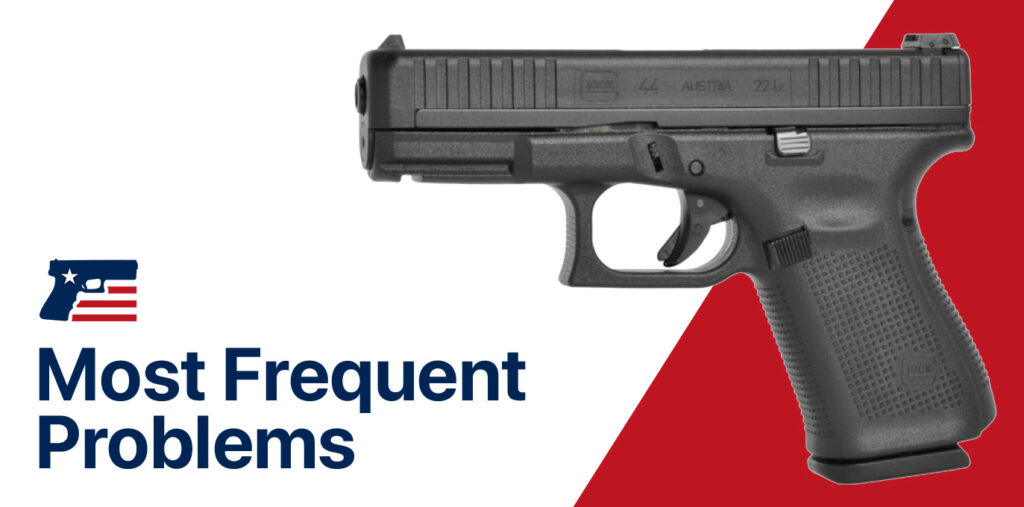Before you buy a new firearm one of the most important things you need to know is whether that firearm is going to be safe, and consistent and if there are any known problems or manufacturer defects you should keep an eye on.
One of the biggest aspects of responsible gun ownership is understanding the relative safety and consistency of different designs so that you can choose firearms that not only get the job done but perform well over time and don’t have any flaws that could cause serious unexpected problems.
It’s also critical to understand how, and if, you can fix the most common problems owners of that model are facing.
Glocks are known for being super reliable, but every mechanical tool that undergoes large amounts of pressure eventually runs into a few issues. We’ll go through some of those here to help inform you about the Glock 44 and what can be done to prevent and correct them.
Common Glock 44 Issues
Before we dive too much into the problems, let’s go over some of the basic information about the gun.
The Glock 44 is the first rimfire pistol produced by Glock. They’re one of the most popular and consistent manufacturers, and many gun owners swear by them for the consistency and high quality of their firearms.
Still, some leeway has to be given for an entirely new design like this.
The Glock 44 is a .22 compatible pistol designed to offer the maneuverability, feel, and dimensions of the Glock 19, America’s most popular handgun, with the lower recoil and lightweight round of a .22. It’s meant to be a good training weapon, a low impact gun that performs like its heavier cousins.
Here are the most common problems and what you can do:
1. Failure to Fire
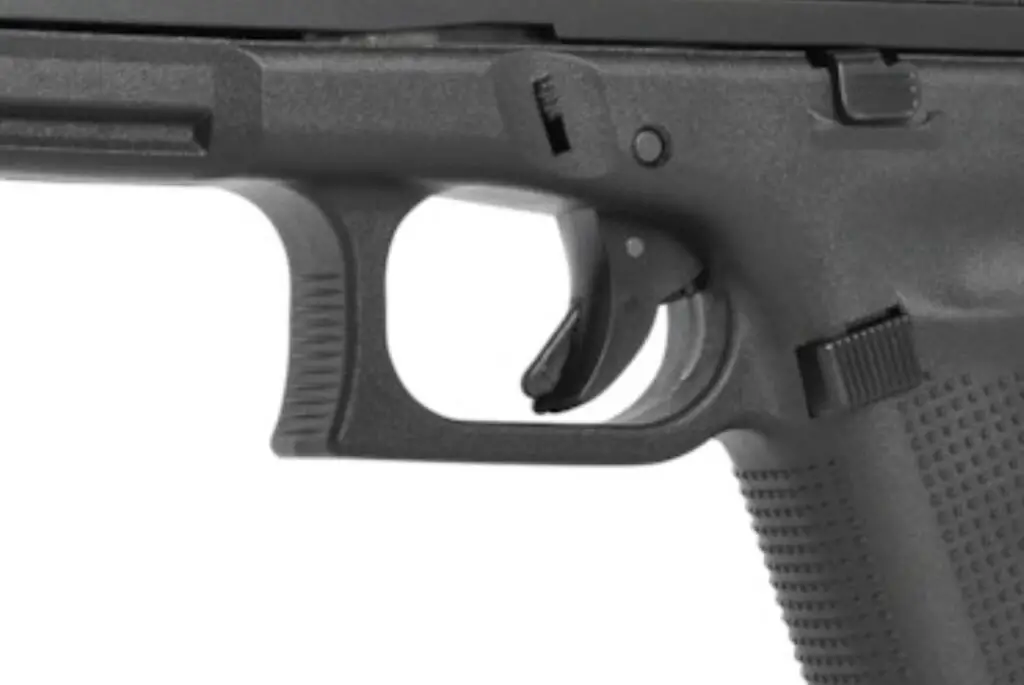
Almost all guns will occasionally have failure-to-fire issues. These problems are often as much the result of ammo issues as they are for the guns themselves, but if you’re using a high quality and well-tested brand of ammo and you’re still getting failure to fire problems it might be time to take a closer look at your gun.
With the Glock 44, there are a few known issues. For instance, you might have light primer strike that doesn’t actually set off the cartridge, or you might not see a firing pin mark at all.
Fortunately, in most cases, this is a fixable issue rather than a serious problem with the gun itself.
How To Fix It
99% of the time failure to fire is down to either the ammo you’re using or proper gun maintenance. Cleaning your Glock 44 may be the only thing you need to do to get it firing properly, though it is important to be thorough. You never know when skipping a step in the cleaning process or deciding that the barrel is good enough will cause problems later on.
Equally importantly, good cleaning and maintenance will help your Glock 44 last longer and stay in better condition by improving rust and corrosion resistance.
If you’re still having problems at that point, consider upgrading to a more premium brand of ammunition.
If that still fails to give you consistent fire, it might be time to take your Glock to a gunsmith to have the firing mechanism checked. It may be that there is a small but correctable error with the firing pin. This is rare, but usually a small fix.
2. Failure to Eject
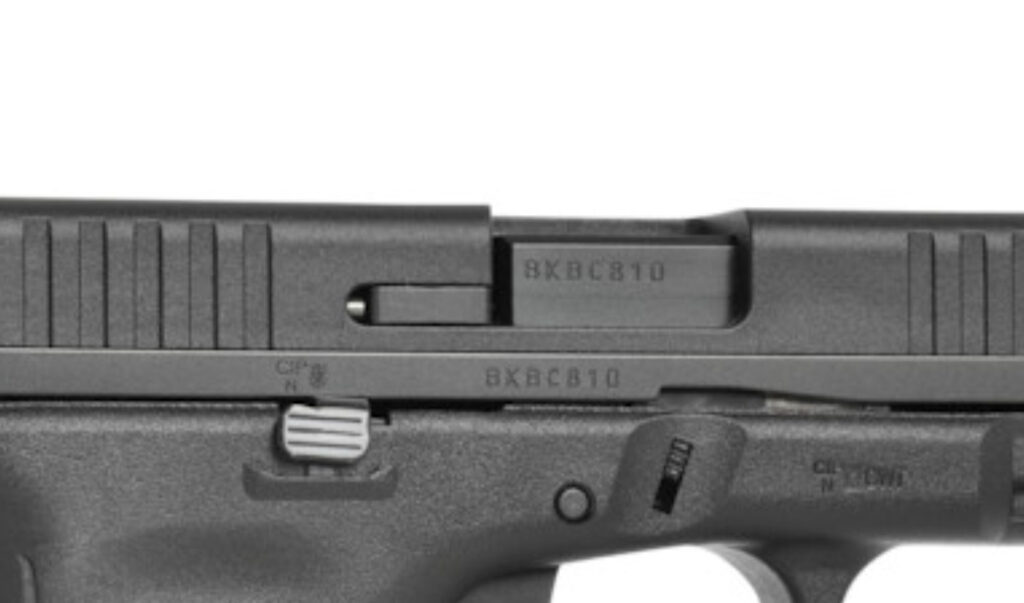
Failure to eject ammunition and failure to extract are the two single most common problems with the Glock 44. However, like failure to fire, this is a problem that can often be explained by poor ammunition performance or your Glock 44 needing more maintenance.
There are a few reasons for this. One, many people use cheap bulk ammunition for their Glock 44s because of high affordability, and because the Glock 44 is often used as a training pistol. Using cheaper ammo reduces the overall cost of target practice.
However, those bulk .22 rifle rounds have some problems that can contribute to poor performance, often by containing a lower quantity of powder than is ideal for this use. Bulk brands are also often designed for low velocity, which just may not produce the power you need to cycle the action of your Glock 44.
How To Fix It
The most common fix for this particular problem is to switch to a more powerful brand of ammunition. You don’t necessarily need to go for the top-of-the-line ammo (though, if you can afford to, you probably should), but getting ammunition with a higher velocity rating should make a big difference.
Typically, for a Glock 44, you’ll want 1265 ft/s or higher-rated ammunition. Avoid subsonic ammunition because that ammo has the least gunpowder, which means the least overall energy.
If you can go a step further, try and get ammunition designed specifically for semi-automatic weaponry. The label “Ideal For Semi-Autos” is a signal that there is more gunpowder, and therefore more power, in that ammunition.
Of course, you may also need to clean your gun. Cycling problems can sometimes happen because there’s grit in the action, or because it needs to be oiled.
3. Failure to Feed
Glock 44s have also developed a reputation for struggling to properly feed the first round of a fully-loaded magazine.
Sometimes this is an issue of magazine geometry, where the magazine itself isn’t feeling ammunition properly for your gun. Getting a different magazine can sometimes improve performance with typical firearms.
However, in the case of the Glock 44, the issue is rarely a loading problem and far more likely to be a problem with how the magazine was loaded, and how that first round is sitting when you load the gun.
This happens because the top round can sometimes wind up angled down because of the extra pressure to load it into an almost-full magazine. That added pressure can make the round sit too low in the magazine, which then causes feeding problems.
How To Fix It
The easiest fix for this problem is to change the way you load the gun. Instead of loading the magazine directly into the gun once you’ve fully loaded it, tap the top of the magazine against a table or other hard surface to realign the round so that it feeds smoothly.
Alternatively, hold the magazine upside down and pull the spring tabs and let go. This will give the rounds a little extra room to reseat themselves properly.
In either case, it’s important to be gentle. You don’t want to accidentally deform a round in the process.
Fortunately, since this isn’t really an issue with the Glock itself, it’s not hard to fix. Just check alignment before inserting the magazine, correct if needed, and you should be good to go.
This problem also gets less common as you break in your magazines because you don’t need as much pressure to load your ammunition. Unfortunately, the wear and tear can also work against you because you may not get enough pressure to feed smoothly into your Glock every time.
If you start having feeding issues on rounds other than the first round in your magazine, and there aren’t any visible defects on the round to explain the problem, that may be a sign that it’s time to replace the magazine itself.
4. Broken Extractors and Cracked Slides
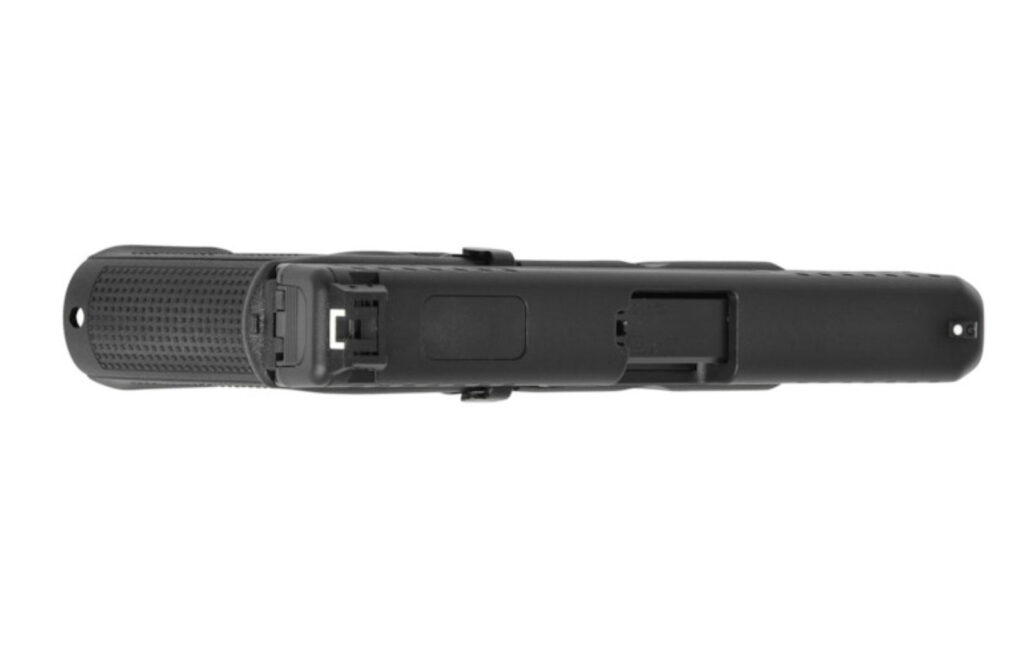
These two are probably the most serious problems associated with Glock 44s right now, and they are also the ones that are most difficult to recover from.
The issue with these is that the actual parts on the gun are broken, which means, at best, that you need to replace that component of the weapon. Firing with either of these problems, if you’re able to at all, can cause compounding catastrophic failures and is anything but safe.
These issues are also probably the best-known issues with the Glock 44 and can be somewhat difficult to spot if you don’t realize that the problem has occurred while you were firing. There are mold lines protruding from the U-notch and the right corner of the ejection ports. These lines are normal, and not a sign of damage.
However, if you see other lines, even Very Small lines elsewhere on the extractor or slide, it’s important not to use the gun until you can inspect it more thoroughly because these could lead to a more serious failure.
The problem that is happening in almost all cases of this damage occurring is that the shooter has at some point used double-charged ammunition. To be clear, this is an ammunition quality control problem, not a failure of the gun itself – though it might seem like the gun failed at first glance,
How To Fix It
The only fix is to replace the damaged components as soon as you notice them. In mild cases, the Glock 44 is designed to withstand this kind of damage and still perform, but over time it will cause additional issues.
So is the Glock 44 a solid gun, or do these issues mean that you should look for an alternative, at least until the design improves?
At the end of the day almost all of these problems are related to ammunition issues. So, as long as you’re able to buy high-quality ammunition every time the Glock 44 is a good firearm. If you prefer to stick to cheaper bulk ammo, it’s probably better to get a different model that can better handle ammunition failure and inconsistencies.
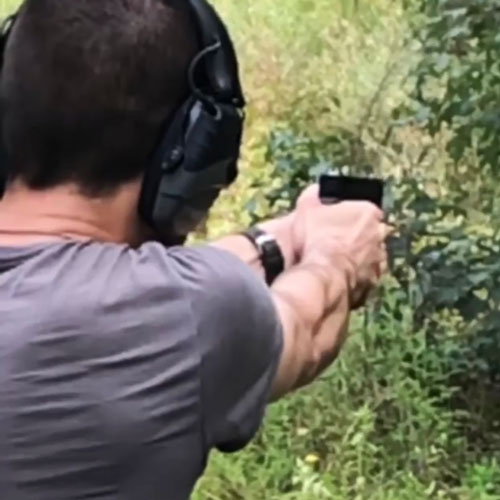
Growing up, John loved learning about the components of firearms and what makes them work, which still intrigues him to this day. He’s a very outdoorsy person, and he loves fishing, hunting, and skeet shooting. He is a firm believer in the Second Amendment and the right to bear arms.
